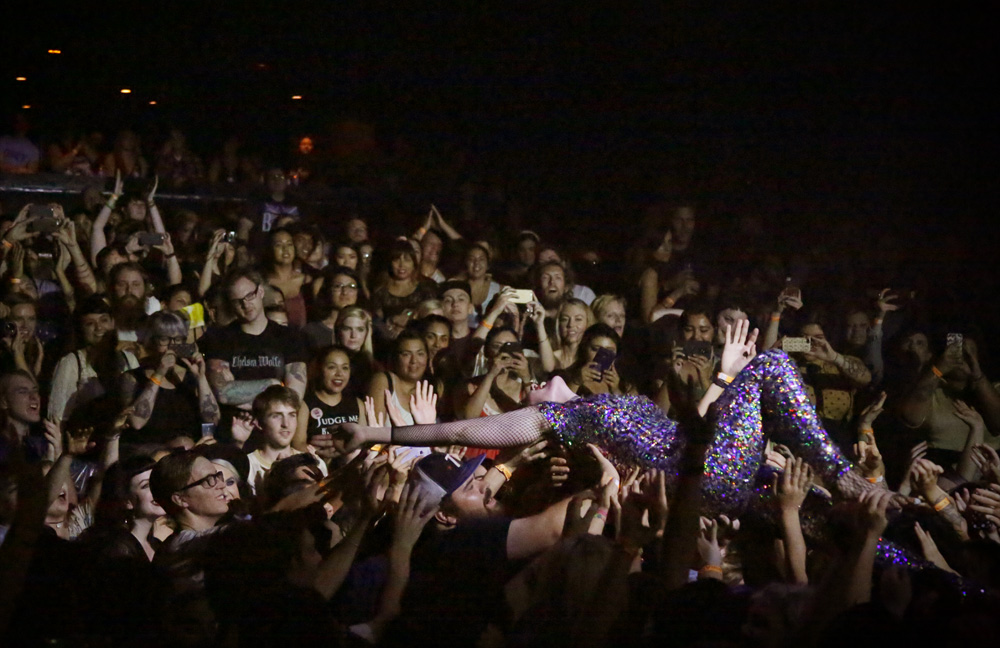When “Kate Nash: Underestimate the Girl” premieres Saturday night at the Los Angeles Film Festival, it is all but certain that Amy Goldstein will thanks her hairdresser first, not for whatever she’s done to her tresses, but for playing matchmaker between her and the British singer/songwriter.
“Julie was making Kate’s hair pink for Coachella where Kate was about to put giant pink vaginas [on stage] and she knew I made docs,” recalls Goldstein of this fortuitous moment four years ago. “Kate wanted to make a document of her Girl Talk tour and her trying to make it in America [because] trying to redefine herself in Britain was really hard. She was really excited about all the new opportunities and [when] Julie introduced us, at first, we were like, ‘Let’s do something,’ but of course, you don’t know what you’re doing.”
What the future would hold for Nash and Goldstein would shock them both, and will no doubt do the same for audiences watching “Kate Nash: Underestimate the Girl,” which befitting of its wildly creative subject, is no ordinary profile of an artist. While the camera sticks to Nash, who rose to fame with the devil may care lyrics and killer pop hooks of her 2008 debut album “Made of Bricks,” it emerges as an indictment of the music industry that leaves no room for artists to grow after they’ve established a certain brand, observing Nash cross the pond to America in search of a steady income writing songs for other artists with the aim of going independent with her own music. Yet things hardly go according to plan, leaving Nash with the disorienting duality of having thousands of fans and a general perception of success while struggling to make ends meet, exposing the most brutal realities of the business, particularly for female artists.
Goldstein finds novel ways to let Nash have a voice when the singer/songwriter feels she has none, splicing in song lyrics to narrate her own story and giving her a camera at times to film moments that might be considered too private for someone else to capture as professional disappointment takes its toll. Yet for the artist who wears one provocative gold chain after another to get a rise out of people, the exuberant documentary that takes its cues from her rebellious spirit becomes a celebration someone willing to buck the system rather than conform to it, no matter how dire things might get. Hitting up intimate club showcases in her native England to a rousing hootenanny at the Fonda Theater in Los Angeles, “Kate Nash: Underestimate the Girl” also proves to be a thrilling concert doc and before a one-night-only event at the L.A. Film Festival, Goldstein spoke about pulling off such a technically and emotionally demanding production, why it was important to let her subject become her collaborator on the project and why she didn’t give up on the film when there was no happy ending in sight.
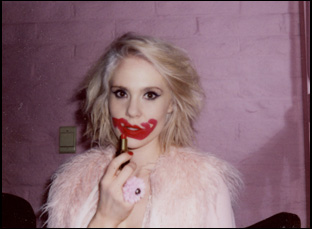
We didn’t know if we were making a series on female musicians as they really struggled to do it on their own terms or if we [should] do more of a series with Kate. She saw my Hula Hoop movie [“The Hooping Life”] and she felt if I was crazy enough to make a film about Hula Hoops, [but really about] artists who fought for their art [when] people don’t take Hula Hooping very seriously, that I would be the right person to make a film with her. We just started shooting and a lot of crazy things happened in front of the camera and we all realized that we had a feature documentary. We gave [Kate] a camera and she was game to film where we couldn’t and she gave us unbelievable access. Lots of difficult stuff came at her and what was really amazing was she never let it win. She always figured out a way to survive and for us, we ultimately came to realize that we were making a movie that in a way was a response to a lot of the successful movies about musicians who are women, whether it’s Janis Joplin or Nina Simone or Amy Winehouse or Whitney Houston, [where] it’s really, really hard to survive and it was clear that whatever came at Kate, there was something just inherently about her that she was determined to have a different outcome. So we feel like we’re having a conversation with those films and that Kate has laid out a path that a lot of young women can take and has really done this on her own terms.
Was that broader picture of the music industry there from the start?
There definitely was because it’s a very personal film for me [in that] at first I thought I’d make a film about women directors and how tough it is for us. I wanted to make a film where I could explore with women directors what movie they wished they were making, but it was just too close to home and a lot of people were starting to make these films. [Still] the music business just felt like a hotbed of this. There are so few women producers of music and there are so few who run labels and who have self-determination in their careers, so I thought I would do a film about the music business and then it became more a film about Kate [because] I realized by that by [documenting] one woman’s struggles, we could imagine what a lot of women go through and she’s someone who came at it really imaginatively and in control.
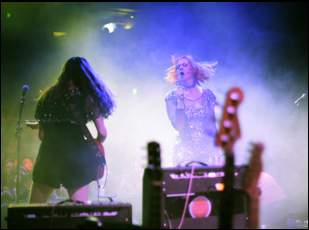
It’s absolutely a collaboration. I’ve made a couple docs, but I went to film school and made a few narrative movies and [with] ”The Hooping Life,” I gave cameras to everyone in the film because I, as a filmmaker, don’t have access a lot to all their inner thoughts and what they feel like when they wake up in the middle of the night, so I always make the people I’m working with my collaborators because I want to understand and see how they see the world. Kate was absolutely game and shot a ton, but I’m still the filmmaker. We’d have to go through hours of footage to find the gems, but with all the three [nonfiction] films I’ve done, I wouldn’t have films if the people in them hadn’t shot. Even if I made a stuffy movie about VC, I would still plead for the people to film. I think it gives you an absolutely different perspective.
You actually don’t delve into much biographical detail until the end, which I found refreshing. Did you structure this to reflect your own experience of getting to know Kate?
It was more that we really didn’t want to make a biopic or a histogram. It’s a verite film and we had to figure out how to sneak in the past in ways that were still helping us feel like we were in the present. You know how you meet somebody and they tell you everything about themselves right from the top and you can’t take it in and you feel kind of uncomfortable? [We felt it would be better to parse out] what did you need to know when. Once you saw what Kate went through, then you’re like, “Who is she and how did she get here?” It’s you asking that question and you get it answered. We also just really wanted to figure out how do we keep it feeling in the present as we learned things about the past, so even at the opening of the movie where we thought it was important to know that she’s been a platinum pop star, we tried to do it in a way that would still express how she felt about that experience through her new music, so it was in contemporary concerts that were happening now.
Kate decided to do a 10th anniversary tour, which worked great for the movie because it gave us a way to look back and forward.
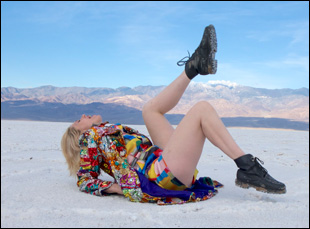
Absolutely, [because] the way [Kate] presents some of her work to the world actually has a collage theme, but we were also trying to combine this rock ’n’ roll [feeling] with this confessional and it just led us to that. We had to juxtapose a lot of things – Kate’s public self with her private life, with this warrior who’s a poet onstage to this young woman who is very threadbare at home and there was a lot about survival and it felt like we had to tell the story that way. Also during the time of making this film, Kate was very transient, so we were really trying to capture this free-wheeling, nomadic cadence that Kate resided in. There were shots of planes hanging in the sky, wires running between telephone poles, white lines on the road, identifying moments out of car windows that mirrored Kate’s experience at that time.
Without spoiling the film, was there ever a point where you thought we shouldn’t continue or she thought we shouldn’t continue?
Yeah, and there were times that we stopped filming and we gave her space. It’s very nervewracking making a doc and we didn’t know for a long time when there would be a third act and what that would look like. It could’ve gone many different ways and it’s hard to film someone when they’re suffering and you want to reach out and help them out. So it definitely took longer than we probably thought and we certainly didn’t predict this outcome at all and we couldn’t totally cut the film until we knew where it was going. Forever, we didn’t have an opening scene because if you don’t know where it’s ending, it’s hard to know where it starts.
It definitely changed a lot once we knew where it was going [because] you’re not going to leave Kate in this really difficult place. But you know Kate will really surprise you. We kind of saw [the film] as a western. She came into this town on the horse and she was going to stand up for what is right – and there’s something about her and that’s why we hung in there [because] you know she’s going to figure it out. You just have to be patient. That’s really what making these kind of movies teach you – to listen hard, be selfless and a little invisible.
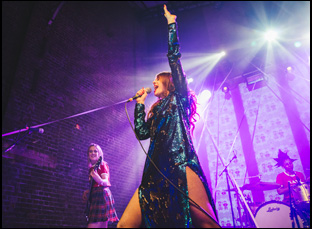
Yeah, we kind of call those musical interludes and that’s why we left behind the traditional documentary form [because Kate’s] lyrics are so fantastic. We watched her write songs about what was happening to her and the insight and the humor and the anger she would have in these songs about what was happening to her took the film to a whole other level. We wanted the audience to notice what she’s saying and the only way to do that was to just make it about the songs and the lyrics, but obviously this is a visual medium, so we really took these moments to really get where Kate’s coming from. One of the things that attracted me to her is she’s just an amazing songwriter — that’s why she had really great early success — and she can write a song on a dime, so when we film her making songs, we weren’t allowed in the room, and we’d just leave cameras there and pray.
What’s it like getting to the finish line with this?
It’s not easy for Kate [because it’s] a very personal story and not only do I need to be a filmmaker, I also need to care a lot about the people that are in my films. She went through some really tough stuff and it brings up a lot for her, so I had to figure out a way to make that safe for her. It’s different making films about people that are early in their lives than looking back or having a lot of characters. It’s very personal and it’s very brave of Kate. She’s made feminism cool for young women again and she really believes in rock ’n’ roll and brought it to British schools and it’s amazing. But she doesn’t stop. From every stage, she [says] to women – you’re out there, I see you and you can do this, so we’re excited [for our premiere].
“Kate Nash: Underestimate the Girl” will be available on Alamo on Demand starting on May 22nd, with a special virtual screening set for May 23rd at 6 pm PST/9 pm EST followed by a live performance by Kate Nash.




